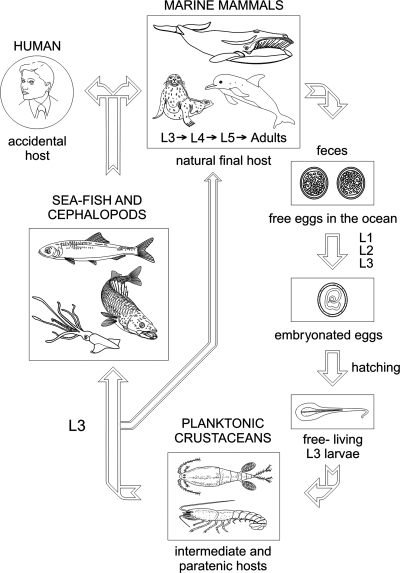FIG. 2.
Life cycle of Anisakis simplex including accidental human hosts. Adult parasites live in the stomach of marine mammals and, following copulation, fertilized but unembryonated eggs are expelled with the feces. The eggs develop and then hatch, releasing free-living Anisakis simplex L3. These L3 are ingested by euphausiid oceanic krill and copepods (intermediate hosts). Sea fish and cephalopods (paratenic hosts) ingest planktonic crustaceans or other fish and cephalopods infected with L3, contributing to the dissemination of the parasite. The infective L3 (embedded in the viscera and muscle or free in the body cavity) are transferred to the final hosts (marine mammals) by ingestion of sea fish and cephalopods (in the case of dolphins, porpoises, seals, sea lions, and walruses) or via oceanic krill (in the case of whales). In the final host, two molts occur (from L3 to adult) before sexual maturity to produce eggs, and a further life cycle is initiated. If L3-infected raw fish or cephalopods are eaten by humans, larvae present in the flesh produce a zoonotic infection, and humans act then as accidental hosts, since L3 usually do not develop any further and the cycle cannot be completed.

